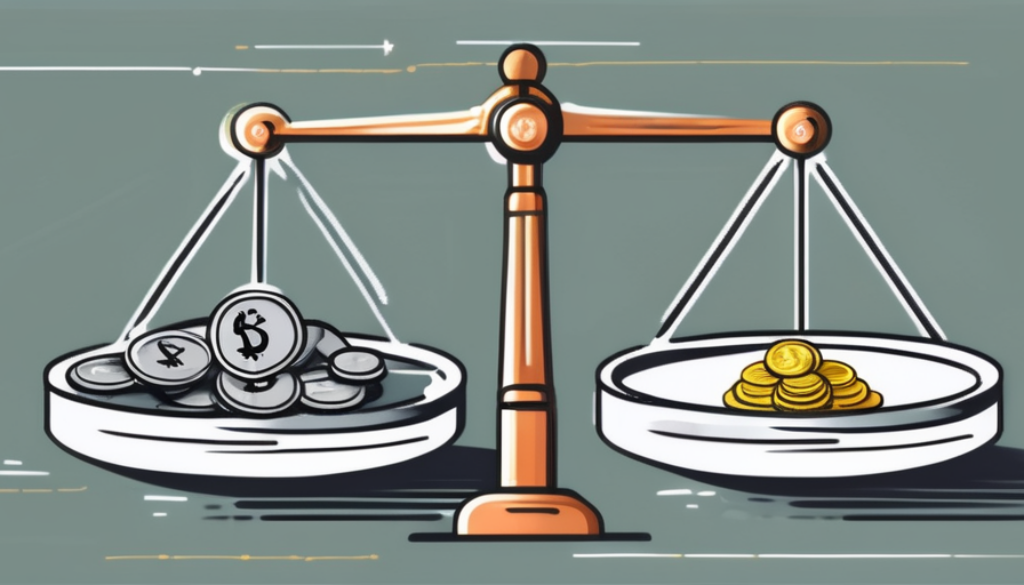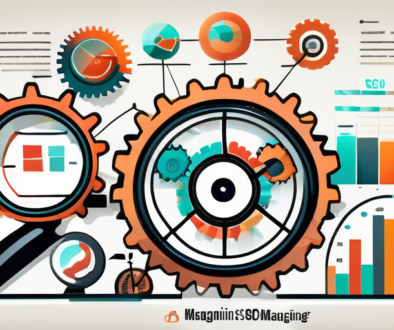PPC or CPM: Which Advertising Model Works Best?
Understanding the Basics of Online Advertising
In the world of digital marketing, online advertising plays a crucial role in reaching and engaging target audiences. It allows businesses to showcase their products or services to a wide audience base, driving awareness and generating leads. When it comes to online advertising, two popular models are Pay-Per-Click (PPC) and Cost-Per-Mille (CPM), each with its own unique characteristics and advantages.
An In-depth Look at Pay-Per-Click (PPC)
Pay-Per-Click (PPC) is a widely used advertising model that offers businesses the advantage of customizing their target audience based on demographic details, interests, and browsing habits. This advertising method relies on search engine platforms, social media networks, and various content-driven websites to reach potential customers.
But how does PPC actually work? The process involves bidding on specific keywords or phrases relevant to your product or service. When a user enters those keywords into a search engine, your advertisement may appear alongside the search results. If the user clicks on your ad, you will be charged a certain amount predetermined during the bidding process.
Advertisers using PPC have the flexibility to determine their ad budget and can set daily spending limits to manage their expenses effectively. This level of control allows businesses to allocate their resources strategically and reach their target audience without overspending.
Furthermore, PPC platforms offer detailed analytics and reporting, enabling businesses to track their ad performance and optimize their campaigns regularly. These insights help advertisers understand which keywords are driving the most clicks and conversions, allowing them to refine their strategies and maximize their return on investment.
Benefits and Drawbacks of PPC
One major benefit of PPC is its ability to target motivated users actively searching for specific products or services. By appearing in search results when users are already in the mindset of making a purchase, advertisers can significantly increase the likelihood of conversions and achieve a positive return on investment.
However, it’s important to note that PPC can be a costly endeavor, especially if not managed effectively. Bidding wars on popular keywords can drive up costs, and irrelevant clicks may lead to wasted budget. Advertisers need to carefully monitor their campaigns and make adjustments to ensure that they are getting the most out of their advertising spend.
Moreover, PPC requires continuous monitoring and adjustments to stay competitive, making it a time-intensive advertising method. Advertisers need to stay up to date with the latest trends, analyze data, and make informed decisions to keep their campaigns effective and relevant.
Despite its drawbacks, PPC remains a powerful tool for businesses looking to reach their target audience and drive conversions. With careful planning, strategic bidding, and ongoing optimization, businesses can leverage the benefits of PPC to achieve their advertising goals.
Comprehensive Guide to Cost-Per-Mille (CPM)
Unlike PPC, CPM is a model where advertisers pay for every thousand ad impressions, regardless of whether users interact with the ad or not. CPM is often employed for brand awareness campaigns, as it focuses on reaching a larger audience rather than generating immediate clicks or conversions.
Understanding the intricacies of CPM can significantly impact a company’s marketing strategy. By delving deeper into the world of cost-per-mille advertising, businesses can unlock new avenues for brand exposure and customer engagement.
The Mechanism of CPM
In CPM advertising, ads are typically displayed on relevant websites or within specific ad networks. Advertisers negotiate with publishers to determine the cost per thousand impressions based on factors such as ad placement, target audience, and industry relevance.
Furthermore, the success of a CPM campaign hinges on meticulous planning and execution. Advertisers must conduct thorough research to identify the most effective platforms for reaching their desired audience and craft compelling ad content that resonates with viewers.
CPM offers businesses the advantage of raising brand awareness more cost-effectively. Advertisers can reach a wide audience within their target market, make a lasting impression, and potentially increase brand recognition and recall.
By incorporating CPM into their marketing mix, companies can tap into the power of repetitive exposure. Consistent visibility through CPM campaigns can reinforce brand messaging, instill trust among consumers, and position the brand as a reliable authority in its industry.
Pros and Cons of CPM
CPM can be a valuable strategy for businesses seeking to increase brand visibility and cultivate user trust and loyalty. By displaying ads frequently, CPM helps reinforce brand messaging and establish credibility in the minds of consumers.
On the flip side, one of the challenges of CPM advertising lies in measuring its direct impact on conversions. While CPM can enhance brand recognition and reach, translating these metrics into tangible outcomes may require additional tracking and analysis.
Despite its potential limitations, CPM remains a powerful tool in the marketer’s arsenal. When leveraged effectively, CPM campaigns can drive long-term brand awareness, foster customer relationships, and contribute to overall marketing success.
PPC vs CPM: Which One to Choose?
Choosing between PPC (Pay-Per-Click) and CPM (Cost-Per-Thousand-Impressions) depends on various factors related to your advertising goals, budget, and target audience. It’s crucial to carefully evaluate these aspects to determine the most suitable approach for your business.
When considering PPC, also known as paid search advertising, you are focusing on immediate clicks and conversions. This model allows you to pay only when users click on your ad, making it a performance-based approach that can be highly effective for driving direct results.
On the other hand, CPM, which stands for cost per mille or cost per thousand impressions, emphasizes broader brand exposure. With CPM, you pay for every 1,000 impressions of your ad, regardless of whether users interact with it. This can be advantageous for businesses looking to increase brand visibility and create awareness among a larger audience.
Factors to Consider When Choosing Between PPC and CPM
- Advertising objectives: Determine whether you want immediate clicks and conversions (PPC) or broader brand exposure (CPM).
- Budget allocation: Assess your available budget and consider the potential return on investment for each advertising model.
- Target audience: Identify the platform and ad format where your target audience is most likely to engage.
Impact on Budget: PPC vs CPM
PPC can be more cost-effective if your objective is to drive conversions and measure direct results. With PPC, you only pay when users interact with your ad, ensuring every penny spent contributes to potential conversions.
On the other hand, if your primary goal is to increase brand visibility and reach a wide audience, CPM might be the better choice. While CPM may not generate immediate clicks, it can contribute to brand recall and long-term customer engagement.
Optimizing Your Advertising Strategy
To make the most of your online advertising campaigns, consider the following best practices:
Best Practices for PPC Advertising
- Thorough keyword research: Identify relevant keywords with high search volume and low competition to optimize your PPC campaigns.
- Compelling ad copy: Craft persuasive ad copies that highlight your unique selling points and encourage users to click on your ads.
- A/B testing: Continuously test different ad variations to determine which resonate best with your target audience and yield higher conversion rates.
Tips for Maximizing CPM Advertising Results
- Captivating visuals: Utilize eye-catching visuals and compelling graphics to capture users’ attention and convey your brand message effectively.
- Clear call-to-action: Include a clear and compelling call-to-action in your ad creatives to encourage users to engage with your brand.
- Targeted placements: Research and identify websites or ad networks that align with your target audience’s interests and preferences.
By implementing these strategies and understanding the differences between PPC and CPM, businesses can optimize their online advertising efforts and achieve their desired outcomes. Whether you prioritize immediate conversions or broader brand exposure, carefully selecting the appropriate advertising model ensures you make the most of your marketing budget and drive meaningful results.
Now, let’s dive a little deeper into each of these strategies to help you gain a better understanding of how they can benefit your advertising campaigns.
Thorough keyword research is the foundation of a successful PPC campaign. By identifying relevant keywords with high search volume and low competition, you can ensure that your ads are reaching the right audience. Take the time to research and analyze different keyword variations, long-tail keywords, and negative keywords to refine your targeting and maximize your campaign’s effectiveness.
When it comes to crafting compelling ad copy, it’s important to focus on highlighting your unique selling points and creating a sense of urgency. Use persuasive language, emphasize the benefits of your products or services, and include a strong call-to-action that prompts users to take action. Remember, your ad copy should be concise, engaging, and tailored to your target audience’s needs and preferences.
A/B testing is a crucial aspect of optimizing your PPC campaigns. By testing different ad variations, such as headlines, images, and calls-to-action, you can gather valuable data on what resonates best with your audience. Continuously monitor and analyze the performance of your ads, and make data-driven decisions to refine your campaigns and improve your conversion rates.
Now, let’s shift our focus to CPM advertising. Captivating visuals play a key role in capturing users’ attention and driving engagement. Invest in high-quality images, videos, or interactive elements that align with your brand identity and effectively communicate your message. Remember, the visual aspect of your ads can significantly impact their performance and overall effectiveness.
In addition to captivating visuals, a clear call-to-action is essential in CPM advertising. Make sure your call-to-action is concise, compelling, and easy to understand. Whether it’s “Shop Now,” “Learn More,” or “Sign Up Today,” a strong call-to-action encourages users to take the desired action and increases the chances of conversions.
Lastly, targeted placements are crucial in maximizing the results of your CPM campaigns. Research and identify websites or ad networks that attract your target audience. Consider factors such as demographics, interests, and browsing behavior to ensure that your ads are displayed in the right context. By reaching the right audience at the right time, you can increase the chances of engagement and conversions.
By implementing these strategies and understanding the nuances of PPC and CPM advertising, you can optimize your online advertising efforts and achieve your desired outcomes. Remember, every business is unique, so it’s important to experiment, analyze data, and make informed decisions to find the best approach for your specific goals and target audience.



